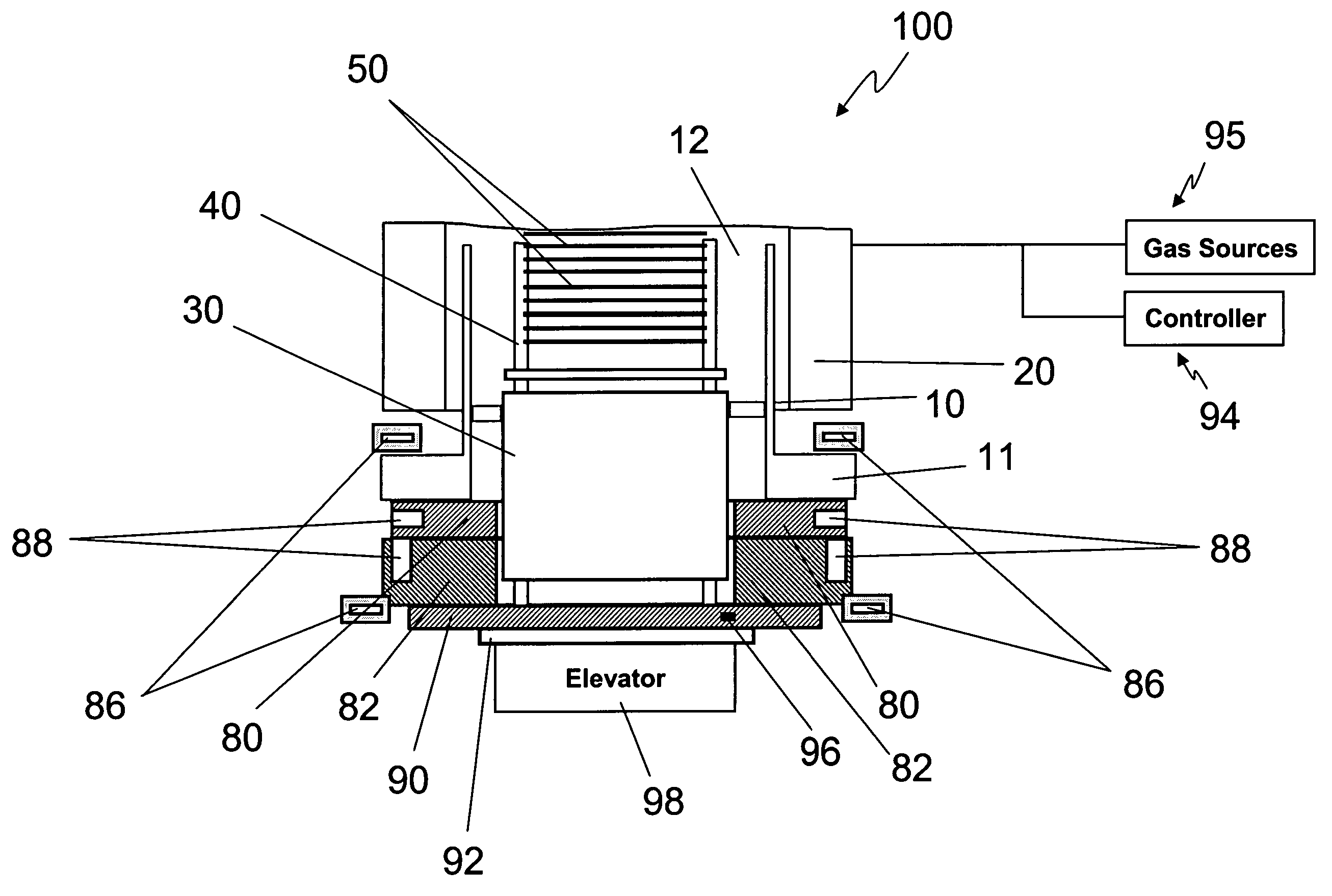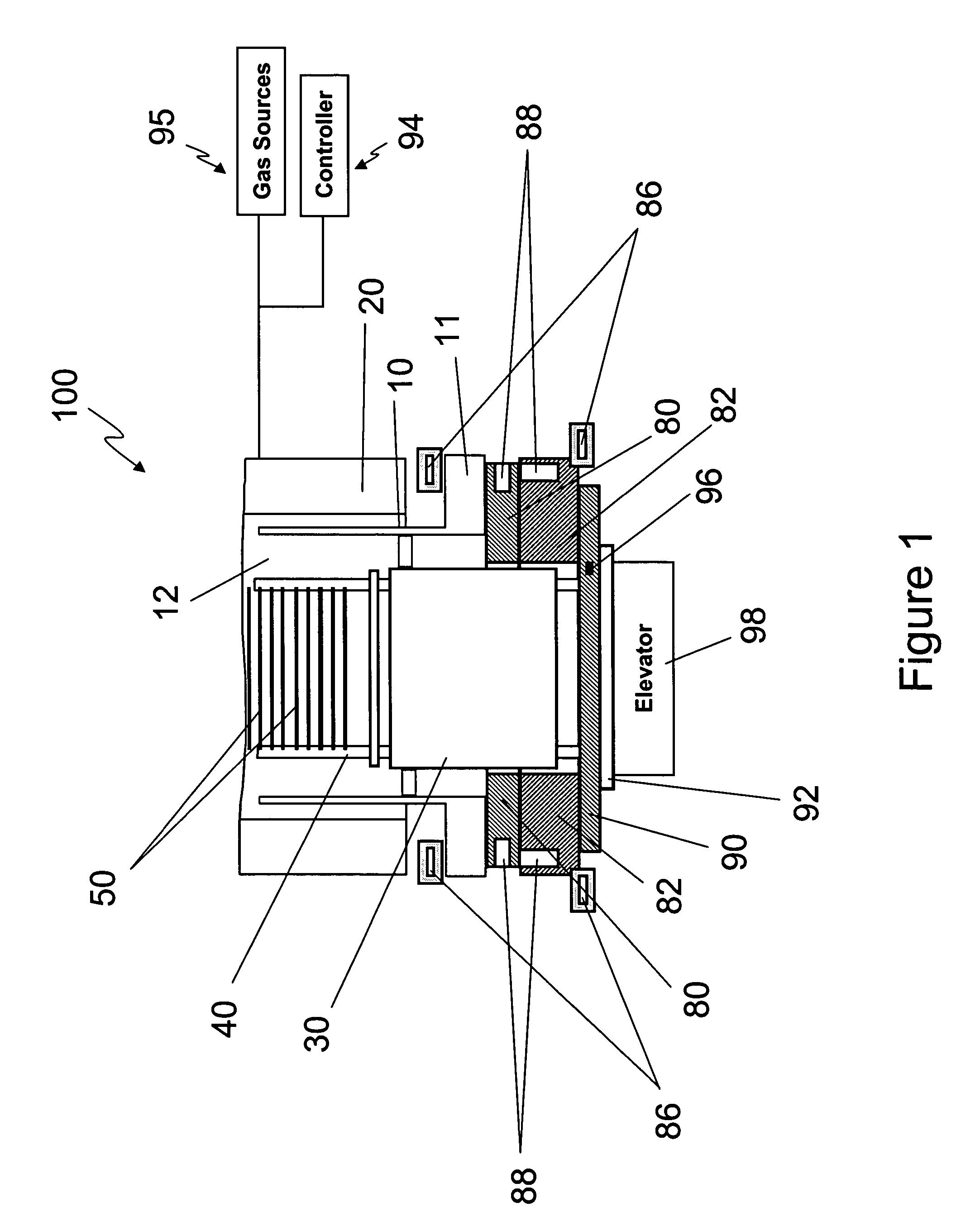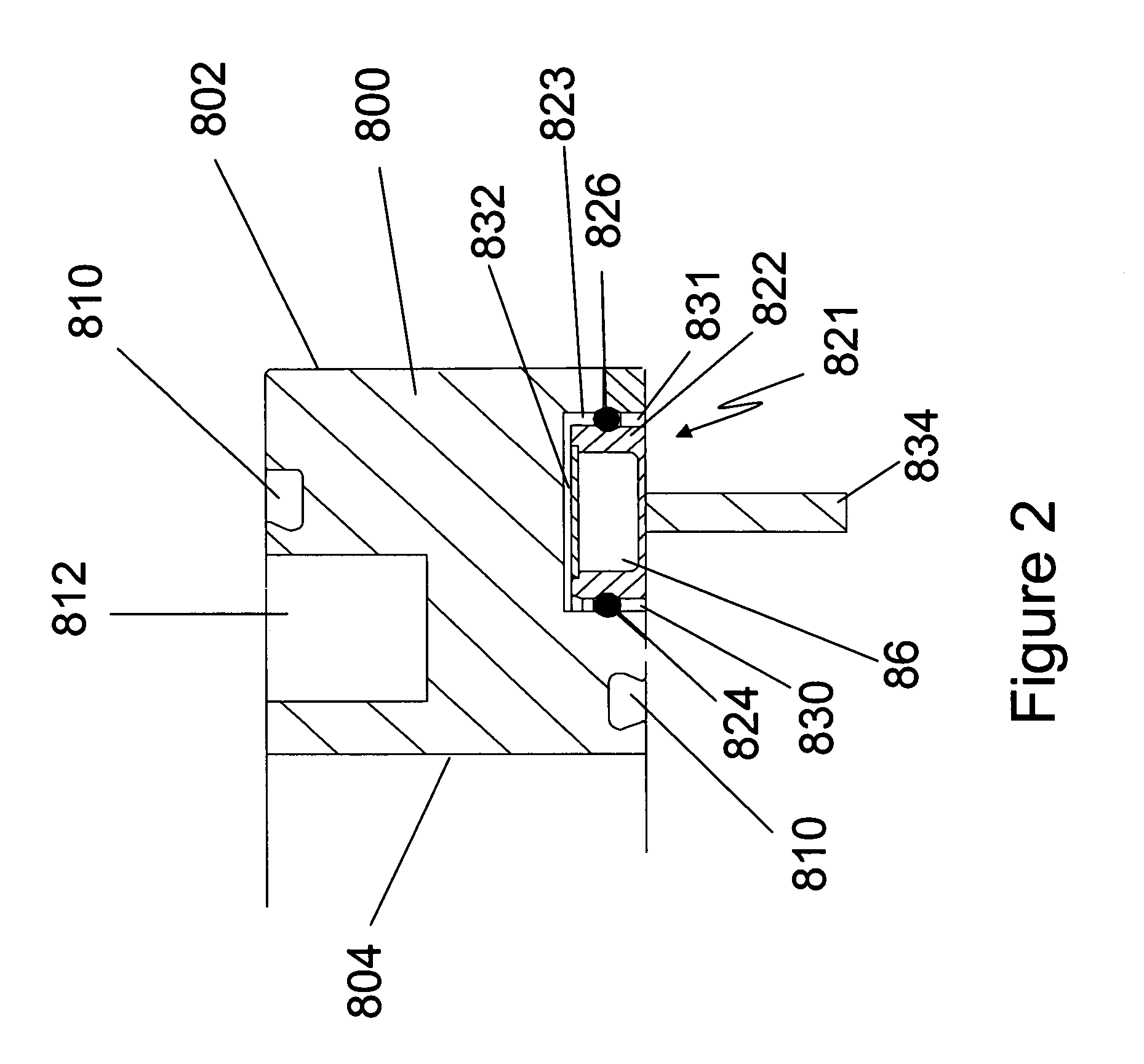Reactor design for reduced particulate generation
a technology of reactor design and particulate generation, applied in chemical vapor deposition coating, electrical equipment, coatings, etc., can solve the problems of degrading the purity and uniformity of deposited films, and affecting the effect of vapor deposition
- Summary
- Abstract
- Description
- Claims
- Application Information
AI Technical Summary
Benefits of technology
Problems solved by technology
Method used
Image
Examples
Embodiment Construction
[0016]Co-pending and co-assigned U.S. patent application Ser. No. 11 / 096,861,filed Mar. 31, 2005,the entire disclosure of which is incorporated herein by reference, describes the deposition of titanium nitride films by flowing TiCl4 and NH3 as precursors into a furnace. Such a process has been found to be very sensitive to the occurrence of particles and can be prone to the formation of particles. For example, particles can result from the formation of reaction by-products, such as NH4Cl, that condense on relatively cool furnace surfaces. These particles can then settle on the substrates being processed and can degrade process results.
[0017]To minimize condensation and, thus, minimize particle formation, U.S. patent application Ser. No. 11 / 096,861 discloses maintaining the flange of the process tube in the vertical furnace at an elevated temperature. In the exemplary reactor discussed in that patent application, the process tube delimits a reaction chamber for accommodating and proc...
PUM
| Property | Measurement | Unit |
|---|---|---|
| power | aaaaa | aaaaa |
| temperature | aaaaa | aaaaa |
| temperature | aaaaa | aaaaa |
Abstract
Description
Claims
Application Information
 Login to View More
Login to View More - R&D
- Intellectual Property
- Life Sciences
- Materials
- Tech Scout
- Unparalleled Data Quality
- Higher Quality Content
- 60% Fewer Hallucinations
Browse by: Latest US Patents, China's latest patents, Technical Efficacy Thesaurus, Application Domain, Technology Topic, Popular Technical Reports.
© 2025 PatSnap. All rights reserved.Legal|Privacy policy|Modern Slavery Act Transparency Statement|Sitemap|About US| Contact US: help@patsnap.com



